Home Page
![]()
|
Home Page |
CALIFORNIA STATE TELEPHONE CENTRAL OFFICE'S
|
![]()
AREA CODE 650
Area code 213, is one of the original California area codes established in October 1947 under the North American Numbering Plan. When implemented in 1947, it covered the bottom third of California from the Central Valley down to the Mexico border. It is interesting to note that when established the rotary phone was just coming into use and to keep the number of clicks" down to a minimum when long-distance dialing, Los Angeles was given six "clicks" (Each number represented a click, 1=1, 2=2, and so forth). Los Angeles by 1947 had become the third largest city in the United States, so had the privilege of being assigned a low "click" number. The other two cities that received low area codes were Chicago (312) and New York (212). Due to the tremendous growth that the Los Angeles region experienced along with increasing use of telephone driving devices (fax machines, cell phones and pagers) the 213 area code has been split five times, now being reduced to just a few dense square miles of the downtown Los Angeles region. The area code 213 has become one of the smallest in the nation and currently serves about 2.2 million telephone lines!
Communication service in Los Angeles actually started in 1860 when the first telegraph line was opened between LA and San Francisco. In 1880 the telephone was introduced into LA by the Los Angeles Telephone Company which was granted a 10 year franchise from Bell, for use of the "Bell" Telephone. When they started they had 7 subscribers. By 1890 the regions of Orange County, Riverside, San Bernardino were connected into the LA system and by 1900 LA was connected to the rest of the state through "long distance" telephone lines. In 1903 the Home Telephone Company started competing service in the LA region using an "independent" patent and within a year had over 10,000 customers. The Home Company also was first to install an automatic system where customers could dial direct another party without operator assistance as you had to with the "Bell" Company.
As telephone use grew substantial problems developed with both competing systems operating together. Sometimes it wasn't possible to ring your neighbor if he was on the other system because the two companies were not connected. By 1910 the Home Company was operating 13 offices and was the largest independent in the world. With continued problems between the two the city asked that both be combined into one automatic system. In 1916 both companies combined to form the Southern California Telephone Company which became Pacific Telephone and Telegraph in 1947 and Pacific Bell in 1984. The company grew to be one of the largest concentrations of telephones and related equipment in the world. Over 100 central offices serve the region which has so many telecommunications circuits that the region requires 9 area codes, more then some states.
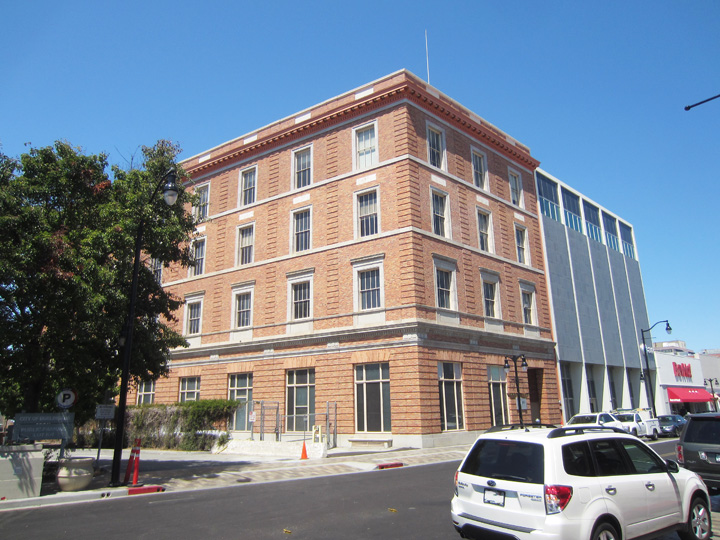 BURLINGAME (Thanks to AB) |
Original Pacific
Telephone & Telegraph office built in the 1920s, became Pacific Bell, SBC
and now AT&T. Office was expanded in the 1990s (modern construction to the
right of building). Old Exchanges: DIamond 2, 3 and 4. |
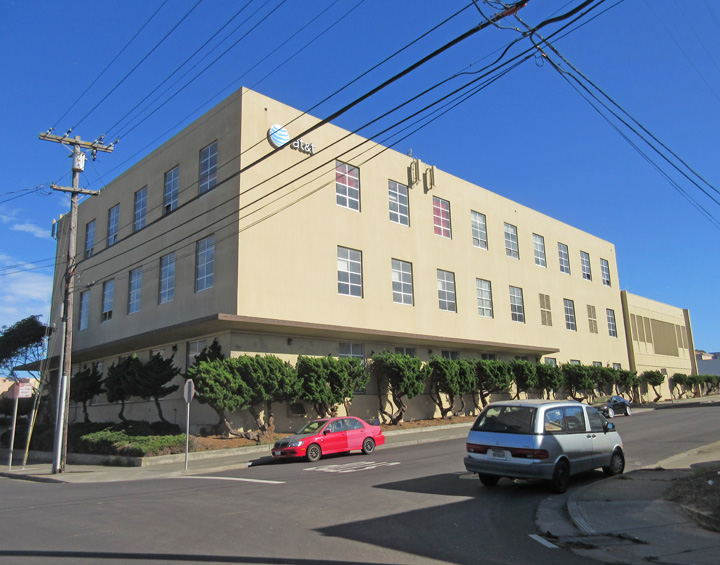 COLMA (Thanks to AB) |
Original Pacific
Telephone & Telegraph office built in the 1940s, became Pacific Bell, SBC
and now AT&T. Office serves the Daly City area just south of San Francisco
as well as the small town of Colma which was initially established as the
necropolis for San Francisco in 1924. Old Exchanges: OLiver 6, PLaza 5 and 6, WYman 2. |
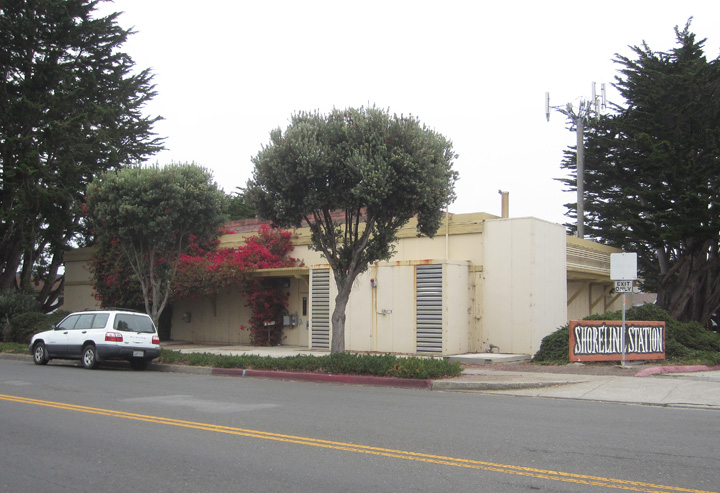 HALF MOON BAY (Thanks to AB) |
Original
Pacific Telephone & Telegraph became Pacific Bell, SBC and now AT&T. Office
serves the coastal community of Half Moon Bay about 25 miles south of San
Francisco. Old Exchanges: RAymond 6 |
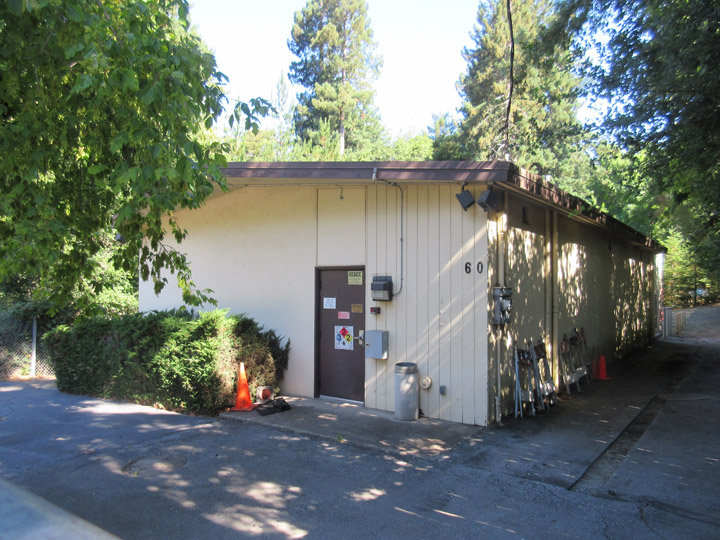 LA HONDA |
Original
Pacific Telephone & Telegraph became Pacific Bell, SBC and now AT&T. Office
built in the 1950s to replace manual toll stations fed out of the Los Altos
office. Office now serves the rural community of La Honda located in
the Coastal Range between the Pacific Ocean and San Francisco Bay. Remote switch hosted form the Menlo Park office. Old Exchanges: PIoneer 7 |
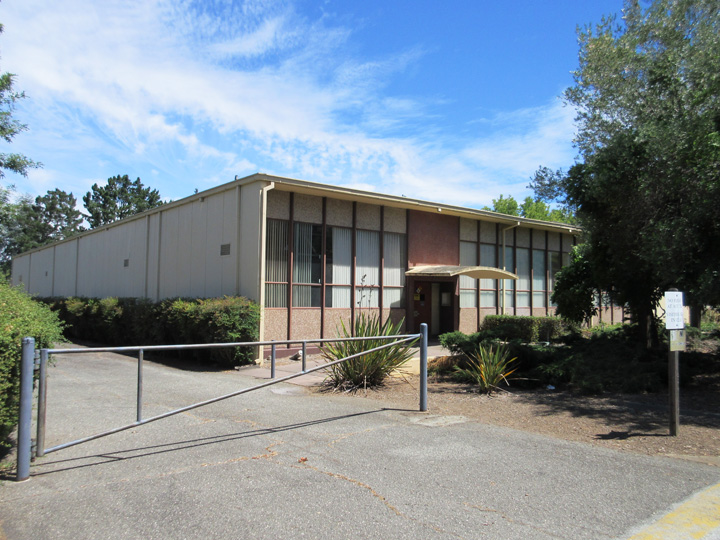 LOS ALTOS |
Original
Pacific Telephone & Telegraph office built in the 1950s, became Pacific
Bell, SBC and now AT&T. Office serves as host to two coastal offices. Old Exchanges: WHitecliff 8 |
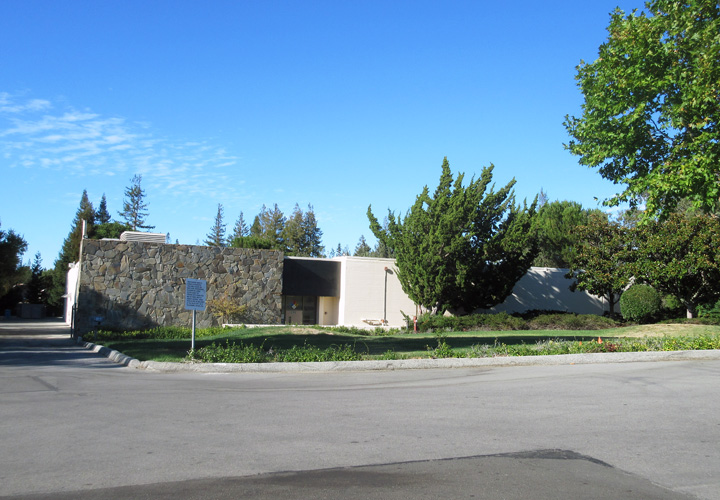 MENLO PARK (Thanks to AB) |
Original Pacific Telephone & Telegraph office became Pacific Bell, SBC and now AT&T. Office was originally known as Woodside until it was relocated and rebuilt at current location in the 1950s. Old Exchanges: ULmar 1 |
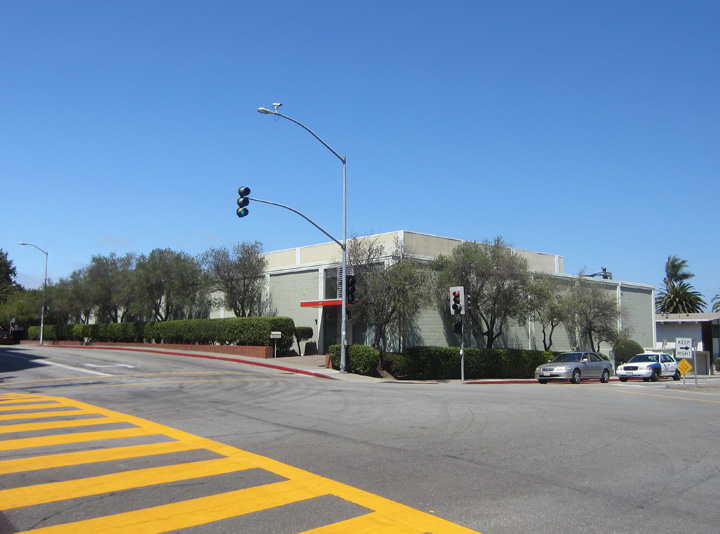 MILLBRAE (Thanks to AB) |
Original Pacific Telephone & Telegraph office became Pacific Bell, SBC and now AT&T. Office uses a 5E digital switch.
Old Exchanges: OXford 7 |
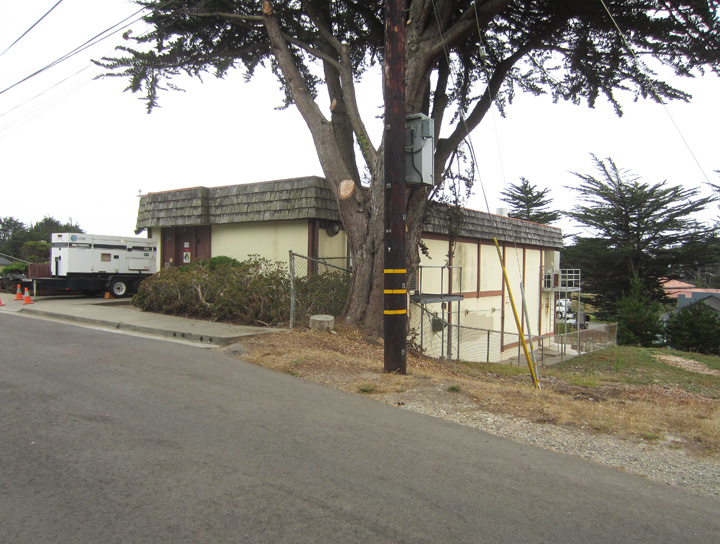 MOSS BEACH (Thanks to AB) |
Original
Pacific Telephone & Telegraph office built in the 1950s to serve the coastal
community of Moss Beach. Became Pacific Bell, SBC and now AT&T. Remote switch hosted from the Los Altos office. Old Exchanges: PArkview 8 |
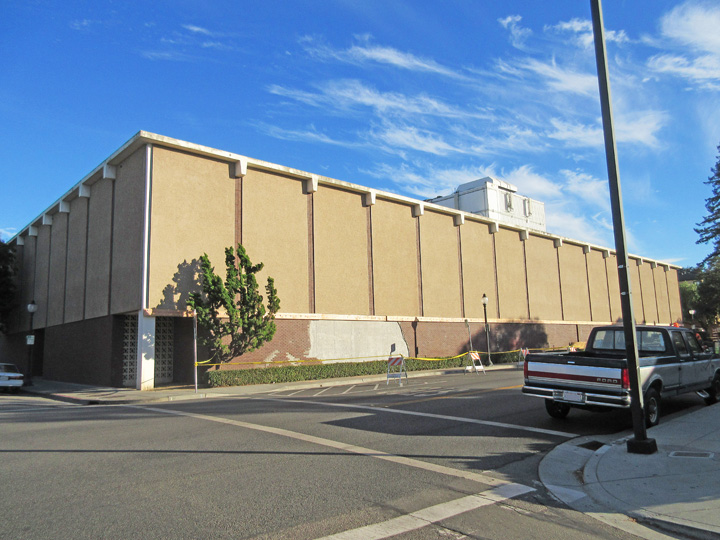 MOUNTAIN VIEW (Thanks to AB) |
Original
Pacific Telephone & Telegraph office became Pacific Bell, SBC and now AT&T.
Office serves mainly urban area with lots of high tech industry resulting in
numerous building additions in the 1980s and 1990s. Old Exchanges: YOrkshire 8 and 7 |
 PACIFICA (Thanks to AB) |
Original
Pacific Telephone & Telegraph office built in the 1930s, became Pacific
Bell, SBC and now AT&T. Large suburban office serving the coastal bedroom
city of Pacifica just south of San Francisco. Old Exchanges: ELmwood 9, FLanders 5 |
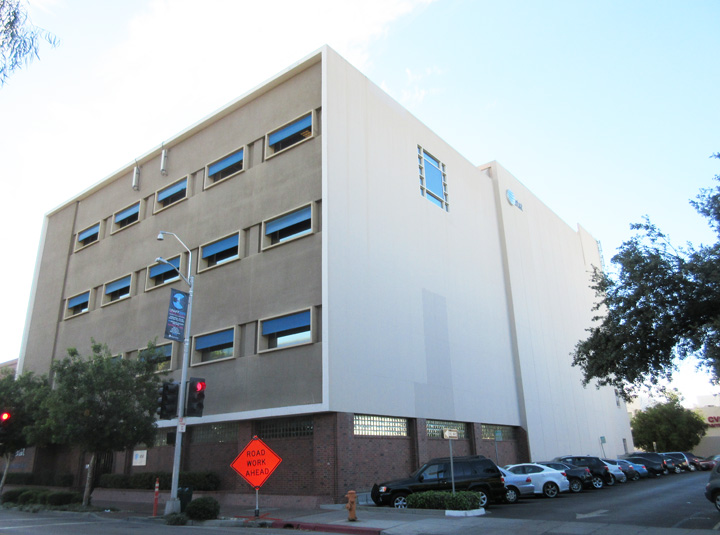 PALO ALTO 02 "MAIN" (Thanks to AB) |
Original Pacific Telephone & Telegraph office
built in the 1910s, became Pacific Bell, SBC and now AT&T. Large urban
office serving the Palo Alto area and Stanford University campus.
Old Exchanges: DAvenport 1, 2 3, 4, 5, and 6 |
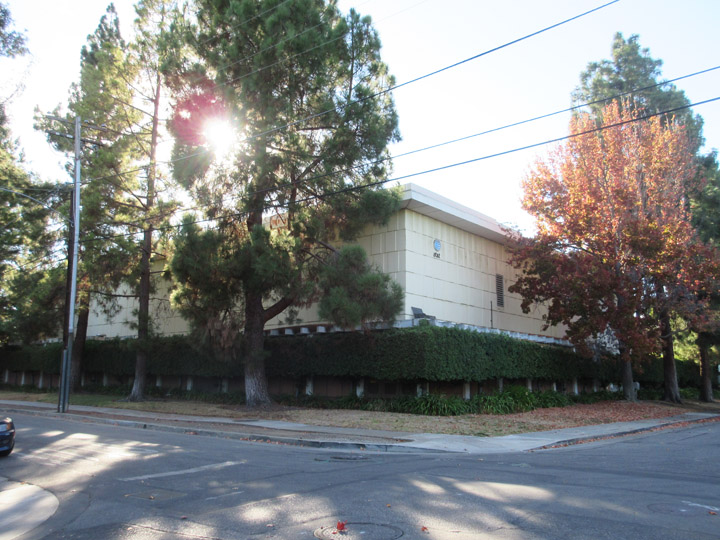 PALO ALTO 12 "SOUTH" (Thanks to AB) |
Original Pacific Telephone & Telegraph office built in the 1960s to relieve the Palo Alto Main office and serve the growing residential and commercial developments in the Palo Alto valley. Office became Pacific Bell, SBC and now AT&T. |
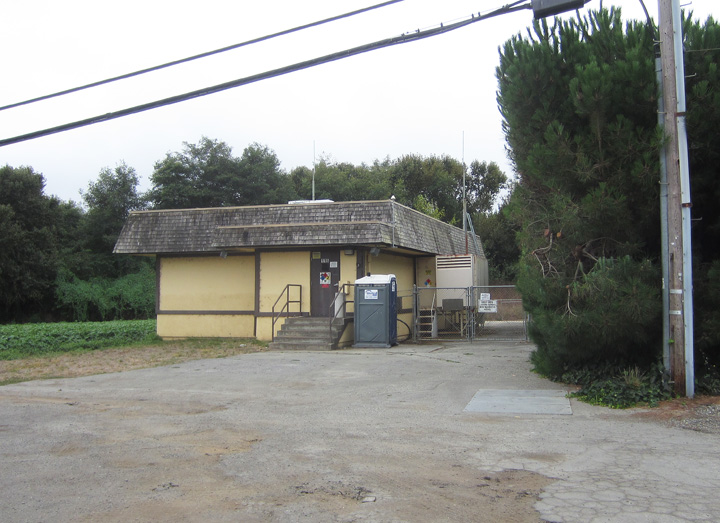 PESCADERO (Thanks to AB) |
Original
Pacific Telephone & Telegraph office built in the late 1950s to serve the
small, coastal community of Pescadero and replace manual toll stations.
Office became Pacific Bell, SBC and now AT&T. Remote switch hosted from the Los Altos office. |
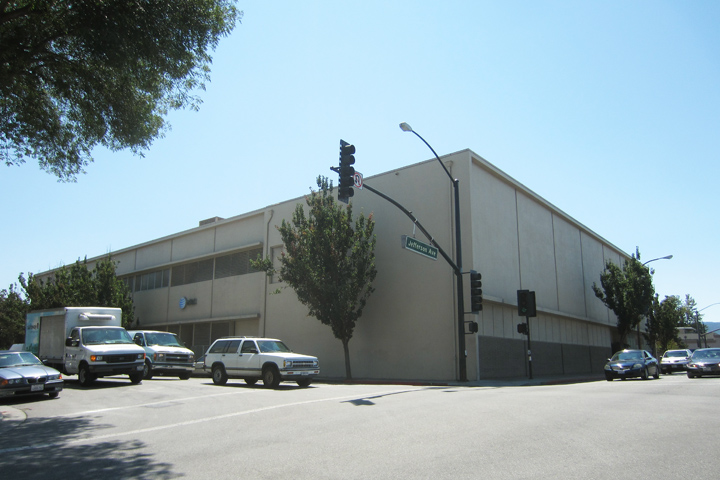 REDWOOD CITY (Thanks to AB) |
Original Pacific Telephone & Telegraph office became Pacific Bell, SBC and now AT&T. Uses a 5E digital switch. Old Exchanges: EMerson 6, 8 and 9 |
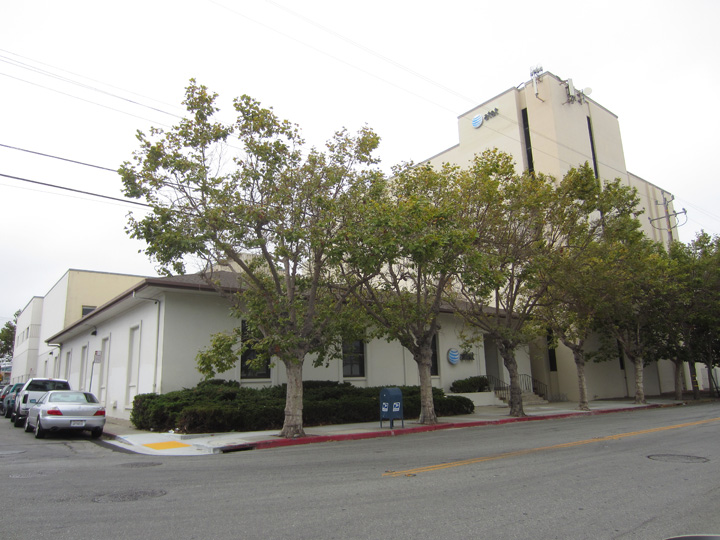 SAN BRUNO (Thanks to AB) |
Original Pacific Telephone & Telegraph office built in the 1940s, became Pacific Bell, SBC and now AT&T. Officer has been expanded over the years due to rapid growth of telephone service. Old Exchanges: JUno 3, 8 and 9, POplar 1 |
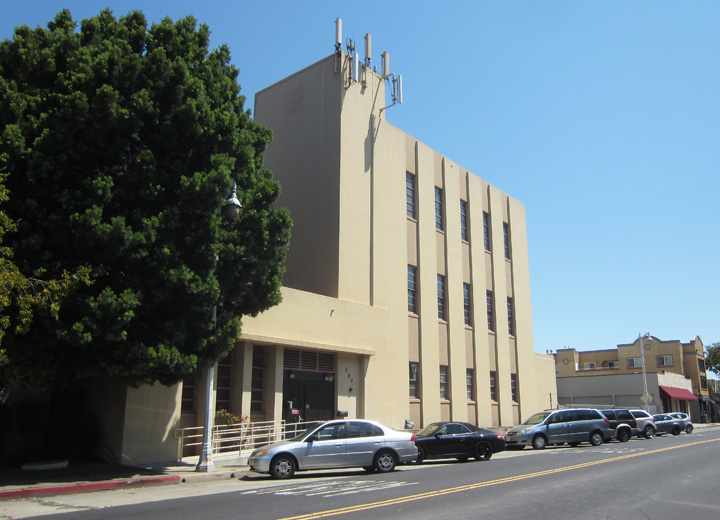 SAN CARLOS (Thanks to AB) |
Original
Pacific Telephone & Telegraph office built in the 1940s, became Pacific
Bell, SBC and now AT&T. Office was once also known as the Belmont office. Old Exchanges: LYtell 1 and 3 |
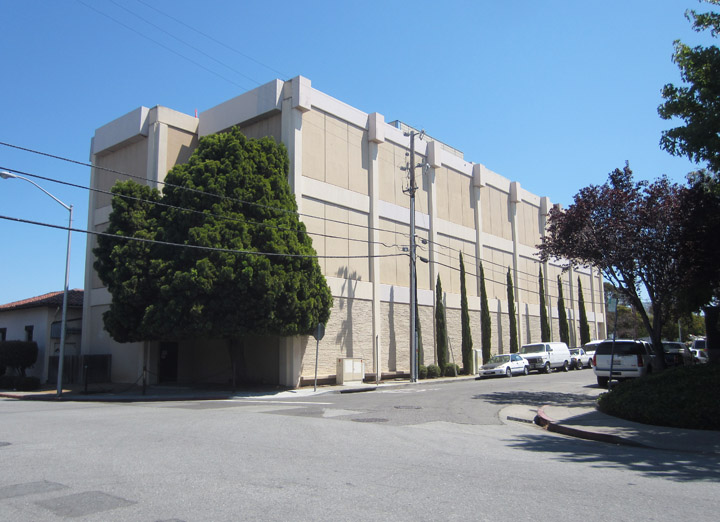 SAN MATEO (Thanks to AB) |
Original
Pacific Telephone & Telegraph office built in the 1920s, became Pacific
Bell, SBC and now AT&T. Office has been expanded considerably during the
1970s and 1990s. Old Exchanges: FIreside 1 and 5 |
Return to Telephone Central Offices